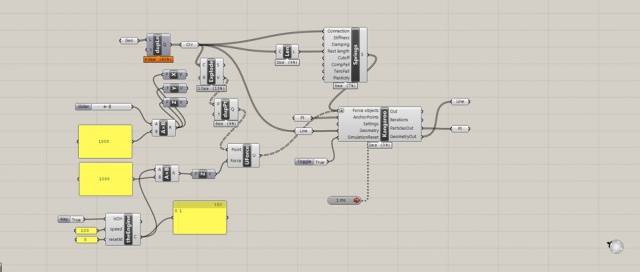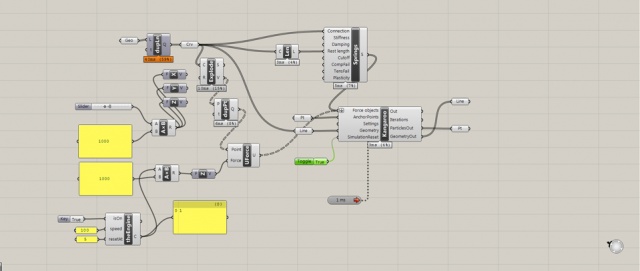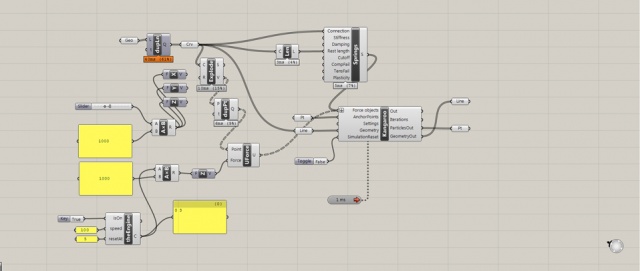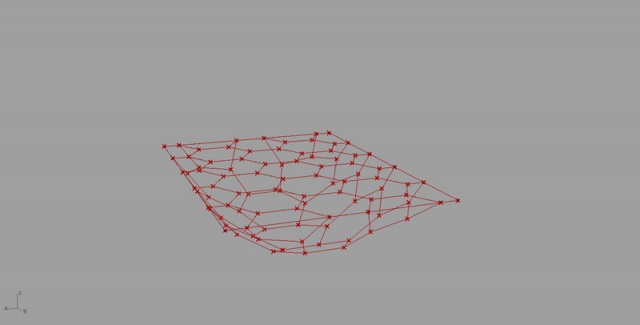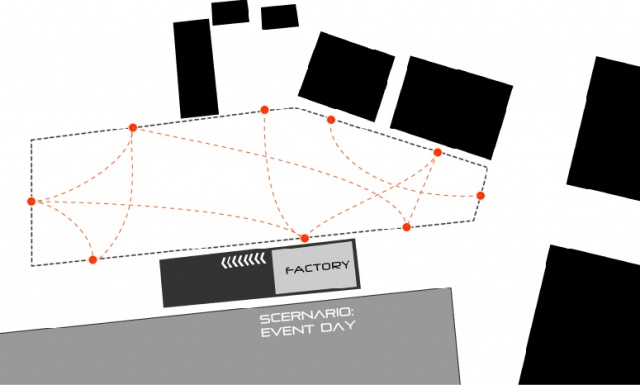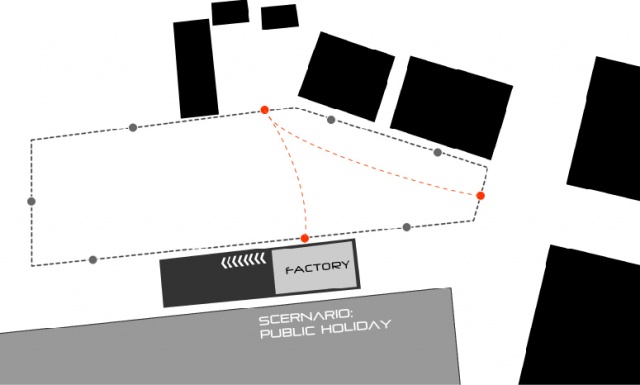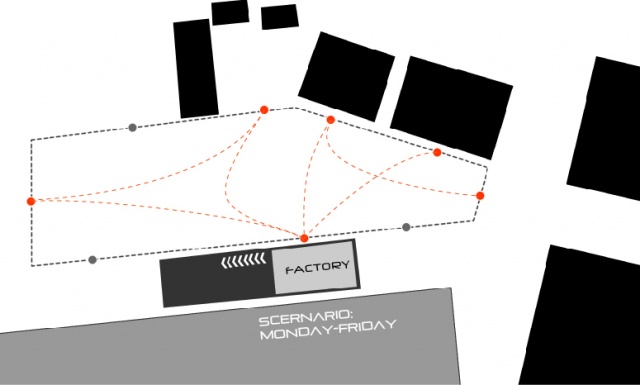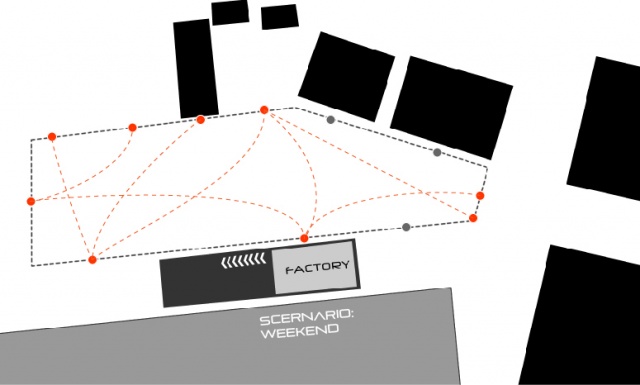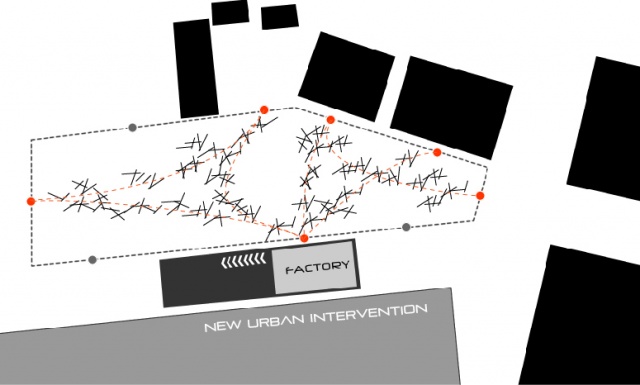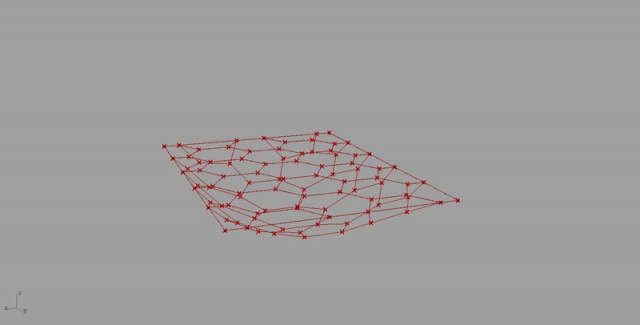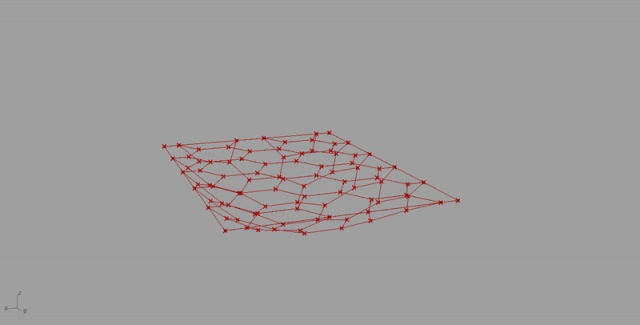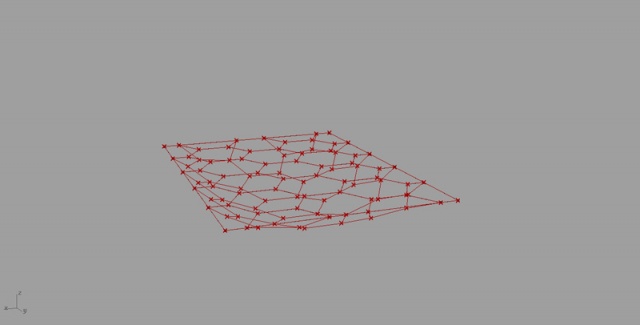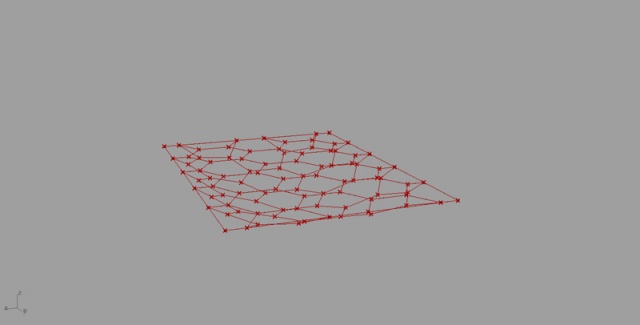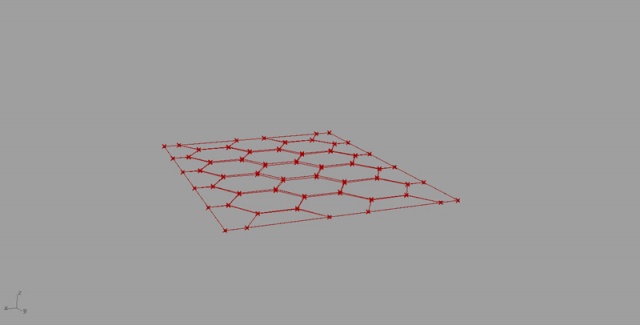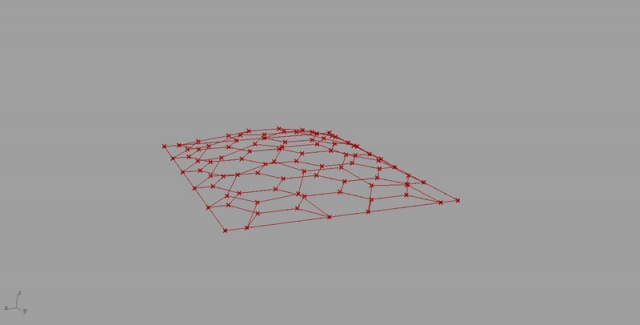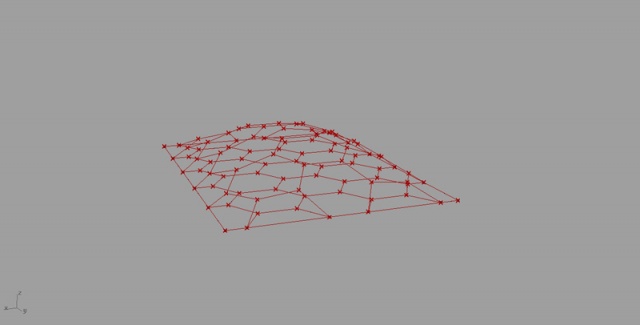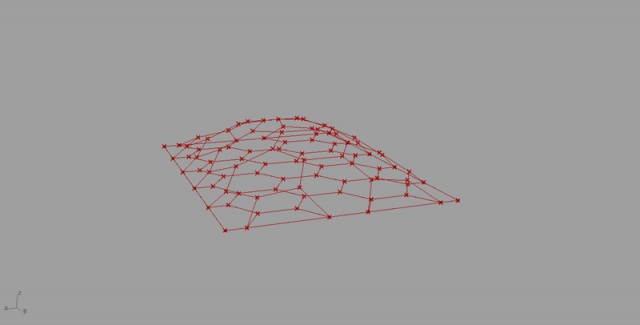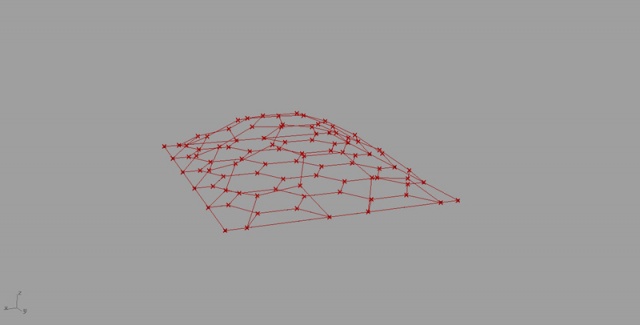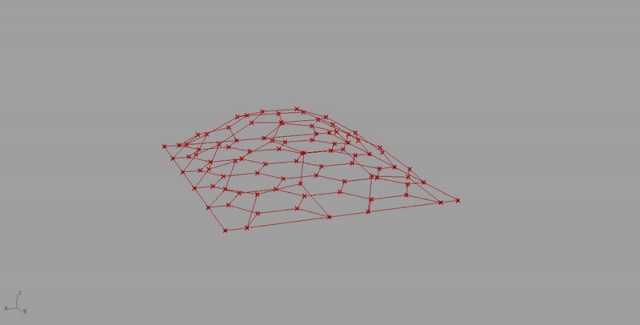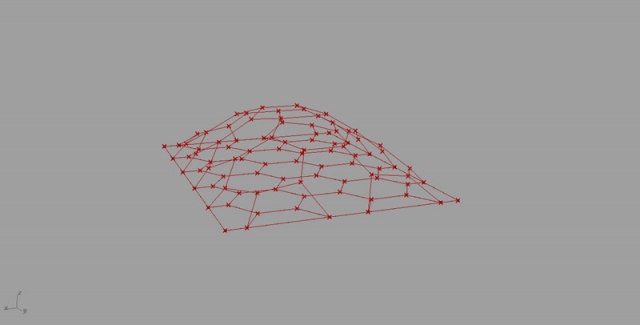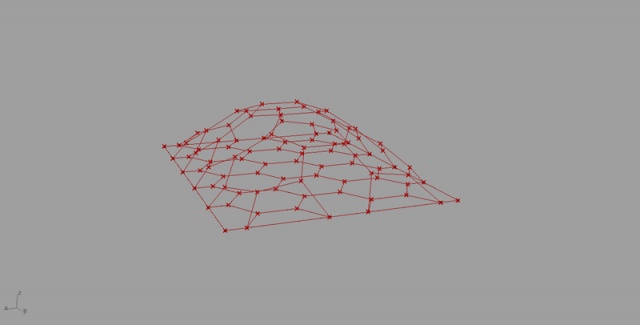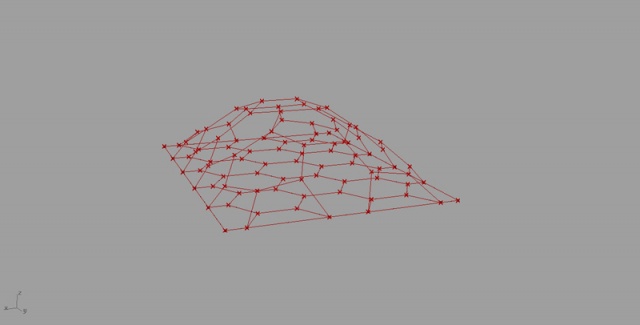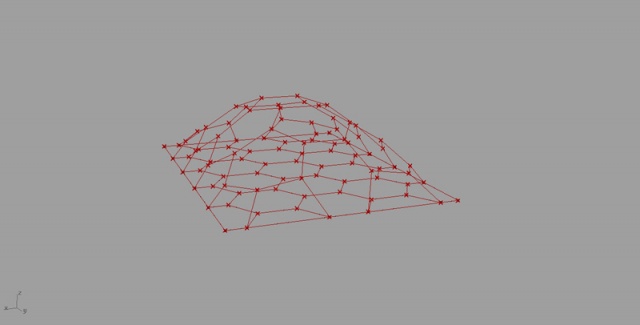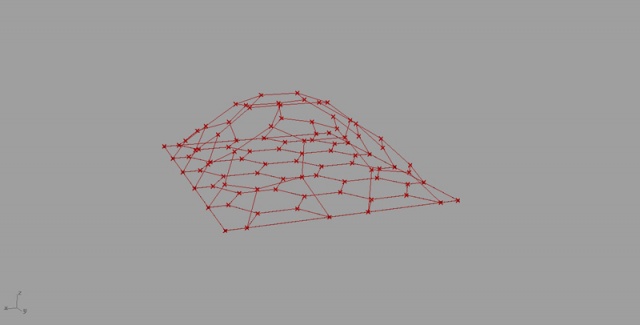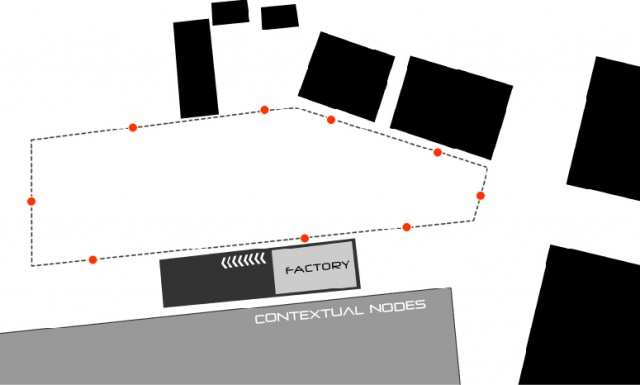project09:Tessellations
(→Selecting and Tessellating) |
|||
| (13 intermediate revisions by one user not shown) | |||
| Line 13: | Line 13: | ||
<!-- end block of columns --></div> | <!-- end block of columns --></div> | ||
<br/> | <br/> | ||
| − | + | ||
| − | == | + | ==Why Tessellations?== |
| − | + | A hard dynamic surface needs to be broken down into smaller components to allow for internal movement. Materials such as wood/metal (a basic requirement for a accessible surface) do not bend easily and need to be tessellated, a process of creating a two-dimensional plane using the repetition of a geometric shape, to reduce the number of varied components and optimize the material usage and structure. References for tessellations are widely available in nature, as well as ancient to contemporary architectural and design projects. | |
| + | <br/><br/> | ||
| + | [[File:Project 9 - tessellation in nature.jpg|840px]] | ||
<br/> | <br/> | ||
| − | [[File: | + | ''Tessellations in nature'' |
| + | <br/><br/> | ||
| + | [[File:Project 9 - tessellations - reference projects 1.jpg|840px]] | ||
| + | ''Left: Manta - Reactive acoustics; Right: Honeycomb Morphologies by Matsys'' | ||
| + | <br/><br/> | ||
| + | ==Testing Tessellations== | ||
| + | Common ans standard tessellations as well as other curved tessellations were considered as base geometry to be tested. Tessellations compared along same dimensions and are allowed to act as a spring to test the maximum amplitude of oscillations. The amplitude of oscillation has a direct correlation to the flexibility and adaptability of the tessellation. | ||
| + | <br/><br/> | ||
| + | [[File:Tesselation patterns-Model.jpg|640px]] | ||
<br/> | <br/> | ||
| − | == | + | ''Tessellation patterns'' |
| − | The | + | <br/><br/> |
| + | {{#slideshow: | ||
| + | <div>[[Image:Aa.jpg|640px]]</div> | ||
| + | <div>[[Image:Aa.jpg|640px]]</div> | ||
| + | <div>[[Image:Aa.jpg|640px]]</div> | ||
| + | <div>[[Image:Aa.jpg|640px]]</div> | ||
| + | <div>[[Image:Aa.jpg|640px]]</div> | ||
| + | <div>[[Image:Bb.jpg|640px]]</div> | ||
| + | <div>[[Image:Bb.jpg|640px]]</div> | ||
| + | <div>[[Image:Bb.jpg|640px]]</div> | ||
| + | <div>[[Image:Bb.jpg|640px]]</div> | ||
| + | <div>[[Image:Bb.jpg|640px]]</div> | ||
| + | <div>[[Image:Cc.jpg|640px]]</div> | ||
| + | <div>[[Image:Cc.jpg|640px]]</div> | ||
| + | <div>[[Image:Cc.jpg|640px]]</div> | ||
| + | <div>[[Image:Cc.jpg|640px]]</div> | ||
| + | <div>[[Image:Cc.jpg|640px]]</div> | ||
| + | <div>[[Image:Ttp91.jpg|640px]]</div> | ||
| + | <div>[[Image:2.jpg|640px]]</div> | ||
| + | <div>[[Image:3.jpg|640px]]</div> | ||
| + | <div>[[Image:4.jpg|640px]]</div> | ||
| + | <div>[[Image:5.jpg|640px]]</div> | ||
| + | <div>[[Image:6.jpg|640px]]</div> | ||
| + | <div>[[Image:7.jpg|640px]]</div> | ||
| + | <div>[[Image:8.jpg|640px]]</div> | ||
| + | <div>[[Image:9.jpg|640px]]</div> | ||
| + | <div>[[Image:10.jpg|640px]]</div> | ||
| + | <div>[[Image:11.jpg|640px]]</div> | ||
| + | <div>[[Image:12.jpg|640px]]</div> | ||
| + | <div>[[Image:13.jpg|640px]]</div> | ||
| + | <div>[[Image:14.jpg|640px]]</div> | ||
| + | <div>[[Image:15.jpg|640px]]</div> | ||
| + | <div>[[Image:16.jpg|640px]]</div> | ||
| + | <div>[[Image:17.jpg|640px]]</div> | ||
| + | <div>[[Image:18.jpg|640px]]</div> | ||
| + | <div>[[Image:19.jpg|640px]]</div> | ||
| + | <div>[[Image:20.jpg|640px]]</div> | ||
| + | <div>[[Image:21.jpg|640px]]</div> | ||
| + | <div>[[Image:20.jpg|640px]]</div> | ||
| + | <div>[[Image:19.jpg|640px]]</div> | ||
| + | <div>[[Image:18.jpg|640px]]</div> | ||
| + | <div>[[Image:17.jpg|640px]]</div> | ||
| + | <div>[[Image:16.jpg|640px]]</div> | ||
| + | <div>[[Image:15.jpg|640px]]</div> | ||
| + | <div>[[Image:14.jpg|640px]]</div> | ||
| + | <div>[[Image:13.jpg|640px]]</div> | ||
| + | <div>[[Image:12.jpg|640px]]</div> | ||
| + | <div>[[Image:11.jpg|640px]]</div> | ||
| + | <div>[[Image:10.jpg|640px]]</div> | ||
| + | <div>[[Image:9.jpg|640px]]</div> | ||
| + | <div>[[Image:8.jpg|640px]]</div> | ||
| + | <div>[[Image:7.jpg|640px]]</div> | ||
| + | <div>[[Image:6.jpg|640px]]</div> | ||
| + | <div>[[Image:5.jpg|640px]]</div> | ||
| + | <div>[[Image:4.jpg|640px]]</div> | ||
| + | <div>[[Image:3.jpg|640px]]</div> | ||
| + | <div>[[Image:2.jpg|640px]]</div> | ||
| + | <div>[[Image:1.jpg|640px]]</div> | ||
| + | |id=bar sequence=forward transition=cut refresh=100 | ||
| + | }} | ||
| + | ''The spring oscillation test for tessellations'' | ||
| + | <br/><br/> | ||
| + | ==Selecting and Tessellating== | ||
| + | The triangular tessellation was found to be the most suitable for this project and thus selected. To add more interest to the project, not uniform triangular tessellation has been tried. This was achieved efficiently through circle packing algorithms, to optimize the natural shapes and number of triangles that could be fit into a predetermined surface. The surface of-course is the largest possible extents on the chosen site. | ||
| + | <br/><br/> | ||
| + | [[File:Circle packig p 9.jpg|850px]] | ||
<br/> | <br/> | ||
| − | + | ''Circle Packing to achieve controlled triangulation'' | |
| − | <br/> | + | <br/><br/> |
| − | + | ||
| − | + | ||
Latest revision as of 05:41, 10 May 2012
Why Tessellations?
A hard dynamic surface needs to be broken down into smaller components to allow for internal movement. Materials such as wood/metal (a basic requirement for a accessible surface) do not bend easily and need to be tessellated, a process of creating a two-dimensional plane using the repetition of a geometric shape, to reduce the number of varied components and optimize the material usage and structure. References for tessellations are widely available in nature, as well as ancient to contemporary architectural and design projects.
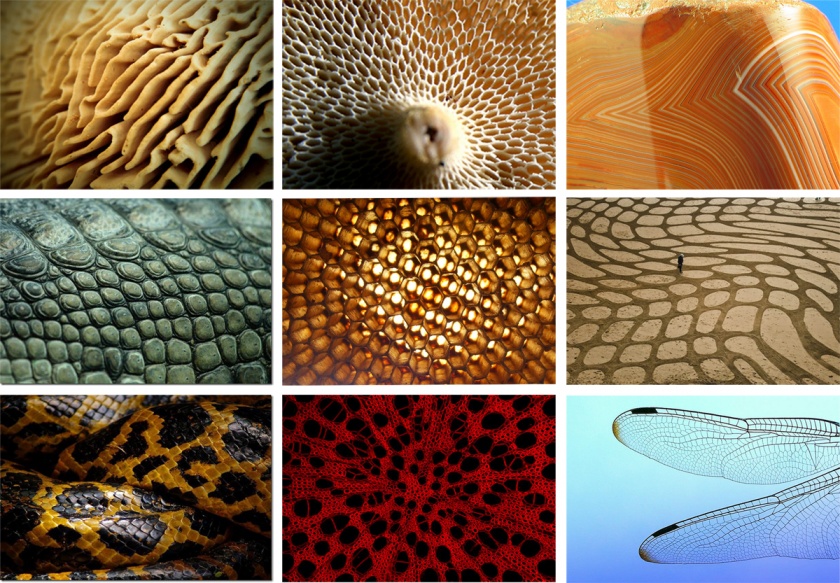
Tessellations in nature
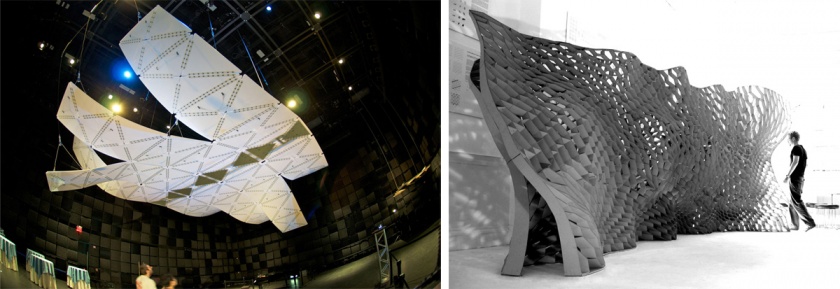 Left: Manta - Reactive acoustics; Right: Honeycomb Morphologies by Matsys
Left: Manta - Reactive acoustics; Right: Honeycomb Morphologies by Matsys
Testing Tessellations
Common ans standard tessellations as well as other curved tessellations were considered as base geometry to be tested. Tessellations compared along same dimensions and are allowed to act as a spring to test the maximum amplitude of oscillations. The amplitude of oscillation has a direct correlation to the flexibility and adaptability of the tessellation.

Tessellation patterns
The spring oscillation test for tessellations
Selecting and Tessellating
The triangular tessellation was found to be the most suitable for this project and thus selected. To add more interest to the project, not uniform triangular tessellation has been tried. This was achieved efficiently through circle packing algorithms, to optimize the natural shapes and number of triangles that could be fit into a predetermined surface. The surface of-course is the largest possible extents on the chosen site.

Circle Packing to achieve controlled triangulation
